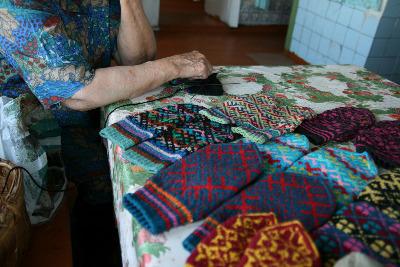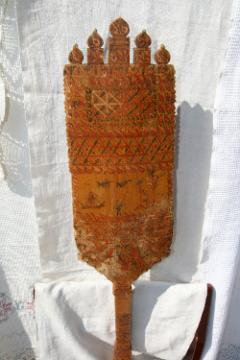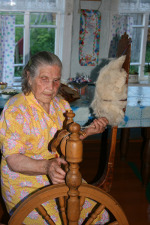1 November 2013
Inna Veselova (PhD), St-Petersburg State University. Seminar held in association with the Princess Dashkova Centre and Celtic and Scottish Studies.

Mezen’ Ornaments: Visual Order and Rural Ethos

Abstract
Since 2007 St. Petersburg State University has been conducting its field studies in the basin of the Mezen’ River. This part of the Russian North has been constantly studied by folklorists for more than a hundred years. All forms of epic poetry (heroic bylinas and spiritual verses), as well as wedding and funeral songs and lamentations, traditional lyrics, fables and tales have been collected and recorded.
I focus my attention on two types of item, which form an inseparable part of the traditional village culture of the region. These are, firstly, ancient distaffs of the so-called Palashchelye style of painting (named after the village of Palashchelye in the middle reach of the River Mezen’), and secondly bright-colored woolen mittens.

The large amount of folkloric, anthropological and visual data we have gathered has made it possible for us to provide answers to several questions. What is depicted on the distaffs? From whom and to whom are the messages embodied in these paintings addressed? Why did the Mezen’ women manufacture patterned mittens on an “industrial” scale? What meaning has a visual gesture to its users? Rephrasing the title of John Austin’s classic article “How to Do Things with Words”, I wanted to find out, what things village people do with visual signs.
My goal was to identify the implications embodied in canonic art, as well as to understand the local ethos as a system of rules and values. With this in mind, I have undertaken a semantic and syntactic analysis of paintings in various symbolic and everyday contexts, such as the ceremonies and folklore of weddings, customs, and traditional dances and songs.

